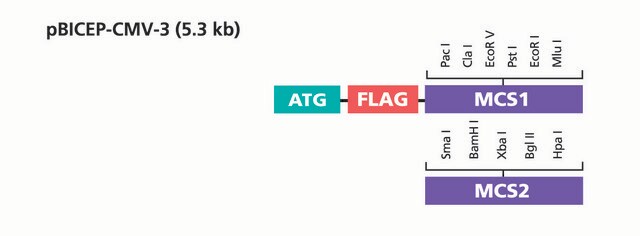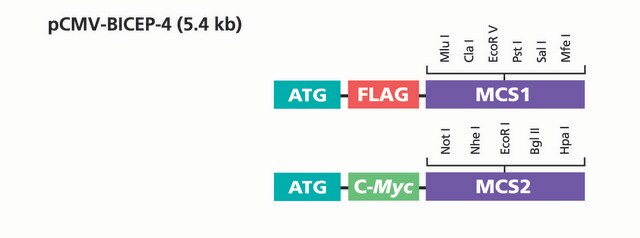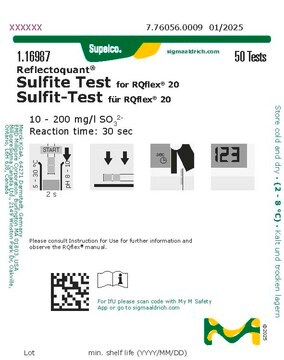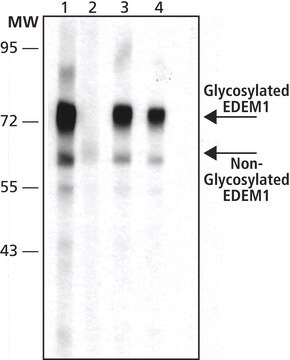C5864
pCMV-FLAG®-MAT-Tag®-1 Expression Vector
0.5 μg/mL
Sign Into View Organizational & Contract Pricing
All Photos(2)
About This Item
UNSPSC Code:
12352200
NACRES:
NA.85
Recommended Products
grade
for molecular biology
form
buffered aqueous solution
concentration
0.5 μg/mL
shipped in
dry ice
storage temp.
−20°C
General description
General description
pCMV-FLAG-MAT-Tag®-1 is a 4.7 kb mammalian expression vector used for the transient production of dual tagged fusion proteins in mammalian cells. This vector is a derivative of the pCMV5 transient expression vector for intracellular expression of a properly inserted open reading frame as a Met-N-terminal FLAG®, C-terminal MAT-Tag (Metal Affinity Tag) fusion protein.
The pCMV-FLAG-MAT-Tag-1 expression vector is a shuttle vector containing both bacterial and SV40 origins of replication for propagation in both E. coli and mammalian cells. Efficiency of replication in mammalian cells is optimal when using host cells that express the SV40 large T antigen. Removal of the FLAG tag is possible using enterokinase which cleaves following the Asp-Asp-Asp- Asp-Lys recognition site at the C-terminal end of FLAG.
The FLAG epitope of the fusion protein may be detected using Monoclonal ANTI-FLAG M2, Catalog Number F3165. The fusion protein may be purified using the ANTI-FLAG M2 Affinity Gel, Catalog Number A2220. The fusion protein may also be purified utilizing the metal affinity properties of the MAT-Tag by using HIS-Select® Nickel Affinity Gel, Catalog Number P6611.
Vector Maps and Sequences
pCMV-FLAG-MAT-Tag®-1 is a 4.7 kb mammalian expression vector used for the transient production of dual tagged fusion proteins in mammalian cells. This vector is a derivative of the pCMV5 transient expression vector for intracellular expression of a properly inserted open reading frame as a Met-N-terminal FLAG®, C-terminal MAT-Tag (Metal Affinity Tag) fusion protein.
The pCMV-FLAG-MAT-Tag-1 expression vector is a shuttle vector containing both bacterial and SV40 origins of replication for propagation in both E. coli and mammalian cells. Efficiency of replication in mammalian cells is optimal when using host cells that express the SV40 large T antigen. Removal of the FLAG tag is possible using enterokinase which cleaves following the Asp-Asp-Asp- Asp-Lys recognition site at the C-terminal end of FLAG.
The FLAG epitope of the fusion protein may be detected using Monoclonal ANTI-FLAG M2, Catalog Number F3165. The fusion protein may be purified using the ANTI-FLAG M2 Affinity Gel, Catalog Number A2220. The fusion protein may also be purified utilizing the metal affinity properties of the MAT-Tag by using HIS-Select® Nickel Affinity Gel, Catalog Number P6611.
Vector Maps and Sequences
Application
pCMV-FLAG-MAT-Tag-1 Expression Vector is suitable for transient cytoplasmic expression of dual-tagged fusion proteins under the CMV promoter.
Components
pCMV-FLAG-MAT-Tag-1 Expression Vector, 20 μg (E1155) is supplied as 0.5 mg/ml in 10 mM Tris-HCl (pH 8.0) with 1 mM EDTA.
pCMV-FLAG-MAT-Tag-1-MAPK1 Control Vector, 20 μg (C0489) is supplied as 0.5 mg/ml in 10 mM Tris-HCl (pH 8.0) with 1 mM EDTA.
pCMV-FLAG-MAT-Tag-1-MAPK1 Control Vector, 20 μg (C0489) is supplied as 0.5 mg/ml in 10 mM Tris-HCl (pH 8.0) with 1 mM EDTA.
Principle
The promoter-regulatory region of the human cytomegalovirus drives transcription of the fusion containing the FLAG® epitope (DYKDDDDK) and the transition metal binding MAT-Tag® (HNHRHKH).
Legal Information
FLAG is a registered trademark of Merck KGaA, Darmstadt, Germany
HIS-Select is a registered trademark of Merck KGaA, Darmstadt, Germany
MAT-Tag is a registered trademark of Merck KGaA, Darmstadt, Germany
Storage Class Code
10 - Combustible liquids
Choose from one of the most recent versions:
Certificates of Analysis (COA)
Lot/Batch Number
Sorry, we don't have COAs for this product available online at this time.
If you need assistance, please contact Customer Support.
Already Own This Product?
Find documentation for the products that you have recently purchased in the Document Library.
A short polypeptide marker sequence useful for recombinant protein identification and purification.
Hopp, T.V., et al.,
Biotechnology Journal, 6, 1204-1210 (1988)
S Andersson et al.
The Journal of biological chemistry, 264(14), 8222-8229 (1989-05-15)
The conversion of cholesterol into bile acids in the liver represents the major catabolic pathway for the removal of cholesterol from the body. In this complex biosynthetic pathway, at least 10 enzymes modify both the ring structure and side chain
D R Thomsen et al.
Proceedings of the National Academy of Sciences of the United States of America, 81(3), 659-663 (1984-02-01)
The DNA templates containing immediate early (IE) genes of human cytomegalovirus (CMV) were transcribed in vitro by using a HeLa cell extract. When IE region 1, 2, and 3 were used, transcription was detected qualitatively only from IE region 1.
Our team of scientists has experience in all areas of research including Life Science, Material Science, Chemical Synthesis, Chromatography, Analytical and many others.
Contact Technical Service






